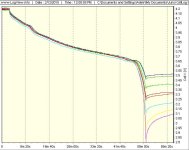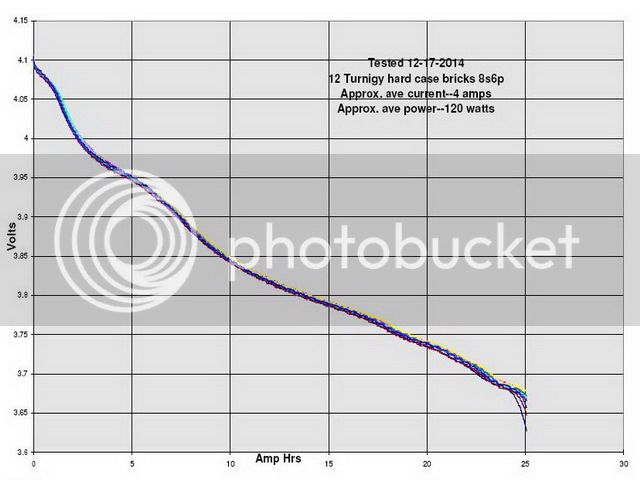Ya know, there’s a lot of “stuff” out there about the best HVC/LVC for individual cells and I used to have some “creative” ideas myself. However, now that I’ve dealt with some professional battery pack manufacturers I realize they have a pretty good read on this.
If you use a BMS/PCM which can control it tightly, as my discharge graph demonstrates, 2.8V is an accepted industry standard for Li-ion, Lipoly. And same goes for 4.2V top charge. And as long as you have cell level monitor controlling the battery pack input/output, I see no reason not to follow those established values.
However, I wouldn’t leave a pack sit around 4.2/cell for more than a day or two. Even the “holy” 4.15V/cell value doesn’t do much for longevity if you leave it sit at that SOC for long periods of time.
Real world, it sorta depends on “when” you intend to use the pack again. If plan to use the next day, I simply charge to 4.2V and don’t worry about it. If I know it’ll sit for a couple days I often leave it uncharged around 3.85V. If I’m not sure if I’ll use it the next day, I often charge around 4V and wait and see. If I charged it the day before and decide not to use it I whip out the old "toaster oven" load and burn some charge off. Maybe reheat lunch?

Funny thing, I’ve been getting such good life and thus value from RC Lipo for so many years I don’t even worry about longevity anymore. My current Turnigy 20C 5Ah 16S1P packs cost all of $116 for the bricks shipped and they’ve been lasting well over a year with little sign of degradation.
Hell, that’s what I used to pay for comparable (9Ah) capacity HR SLA which was practically junk after about 3 months daily use.
Once you have a BMS and charger setup for RC Lipo, it’s merely about replacing bricks as they die off. Thus primary reason why I like something very common (Turnigy 4S hardcase) which will likely be available year after year after year. Plus, they’re a great cell count package for various system voltages - 12S, 16S, 20S. Lastly, if a brick develops a bad cell, it’s only 1qty $25 brick to replace.





